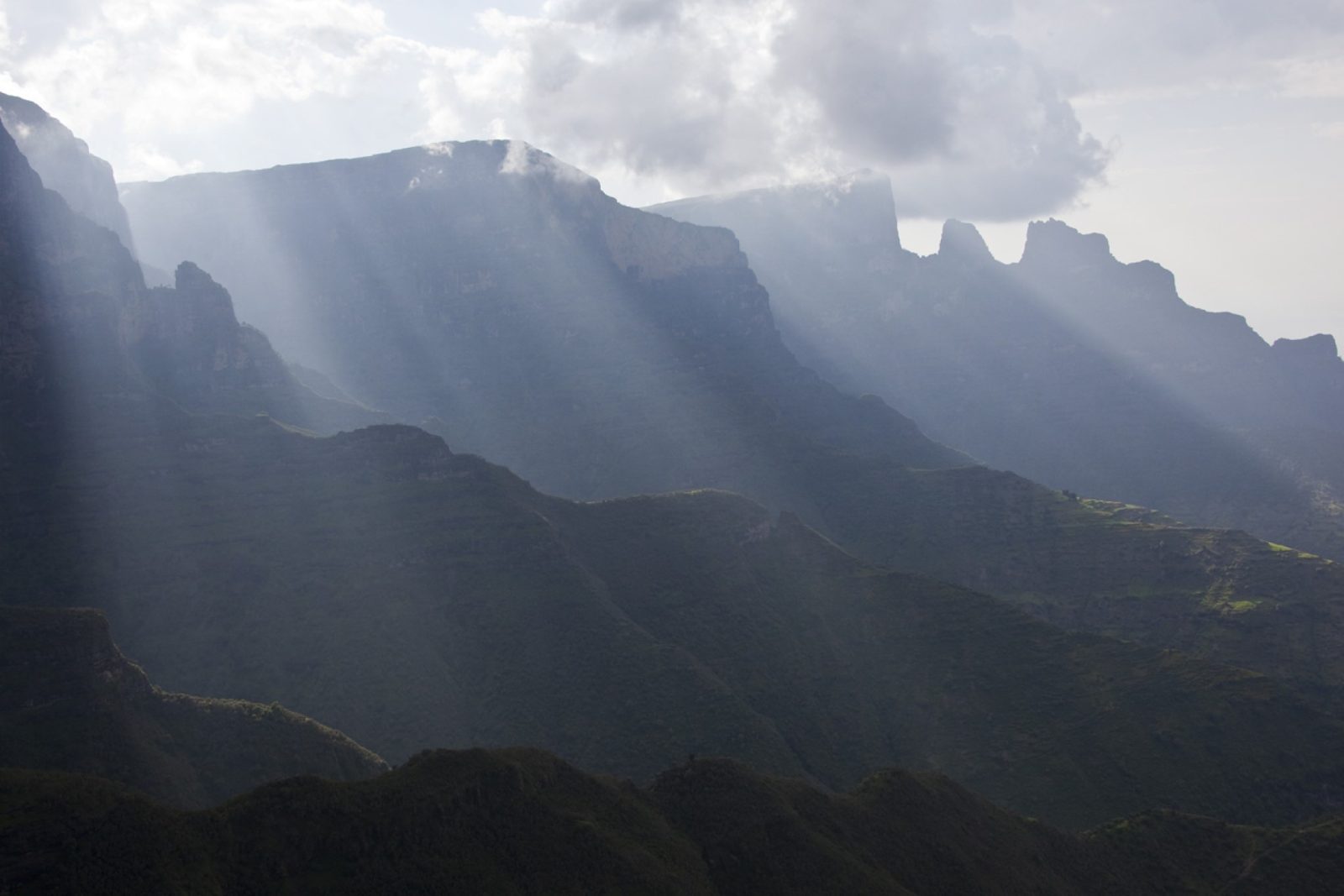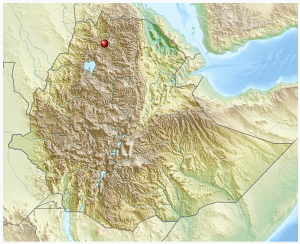
Simien mountains national park
 Simien Mountains National Park is the largest national park in Ethiopia. Located in the North of the country, it covers the highest parts of the Simien Mountains (spread across northern Ethiopia) and includes Ras Dashan, the highest point in Ethiopia. The total area of the reserve is 85 square miles (220 square km).
Simien Mountains National Park is the largest national park in Ethiopia. Located in the North of the country, it covers the highest parts of the Simien Mountains (spread across northern Ethiopia) and includes Ras Dashan, the highest point in Ethiopia. The total area of the reserve is 85 square miles (220 square km).
It is home to a number of endangered species, including the Ethiopian wolf and the walia ibex, a wild goat found nowhere else in the world. The gelada baboon and the caracal, also occur within the Simien Mountains. More than 50 species of birds inhabit the park, including the lammergeier (bearded vulture), with its 3-metre wingspan.
There is an unpaved road which crosses the park
The park was established in 1969, having been set up by Clive Nicol, who wrote about his experiences in From the Roof of Africa.
The Simien region has been inhabited and cultivated for at least 2,000 years. Initially, erosion began to reveal that the clearing began at the gentle slope of the highland valley but later expanded to a steep slope due to further erosion.
The national park was one of the first sites to be made a World Heritage Site by UNESCO, inscribed in 1978 because of its outstanding biodiversity and spectacular landscape. Population crashes in various local species meant in 1996 it was added to the List of World Heritage in Danger, however these species’ populations recovered enough, so that, this listing was removed in 2017.
Simien Mountains National Park is located on the western side of the Simien Mountains and is 120 kilometres (75 mi) from the Gondar province of Begemder in the northwestern part of Ethiopia. It is located within the Simien Massif, which rises above the northern highlands of Ethiopia. The highlands were formed by volcanic flood basalts dating from the Paleogene period roughly 30 million years ago. The massif itself is the remnant of a large shield volcano. Over millions of years due to the heavy erosion of the Ethiopian plateau serrated mountain peaks, deep valleys and 1,500 metre high sheer cliffs have been created, creating some of the most spectacular scenery in the world.
The Simien area is rich in perforated basalt, and serves as an ideal catchment basin. Water is conserved by the Mayshasha River, which runs through the two rainy days[clarification needed] and the national park from north to south. As a result, national parks are abundant with wildlife and plants. Giant Lobelias are the endemic plants settles in afroalpine of Simien Mountains. The vegetation is mixed with African alpine forests, wilderness forests and alpine vegetation. High altitude areas include montane savannah and tree heath, giant lobelia, yellow primrose, everlastings, A lady’s mantle, and a moss.. Lichen covers the trees of the alpine area. Vegetation throughout the park is divided into three sections, Montane forest (1900-3000m), Ericaceous Belt or SubAfroalpine (2700-3700m) and the Afroalpine (3700-5433m). Within the Montane forest there are Juniper trees, African redwood, African olive, fig, and waterberry. There are also many varieties of shrubs including cocona, Abyssinian rose, cowslip, and stinging nettle. The ridges and canyons have scattered meadows, forests and bushes. At one time, the St. John’s wort (Hypericum spp.) Forests grew from 3,000 m to 3,800 m above sea level, but now it is almost gone. The exact number is not known.
The park is populated with a total of 21 large mammal species live within the park boundaries such as gelada baboon , Ethiopian wolf, Walia ibex, and Menelik’s bushbuck. Inhabits on the slope of the northern slope of the massif are mostly native to the Simien Mountains, and most of them are found in the park. The Ethiopian wolf, Gelada baboon, Menelik’s bushbuck, and Walia Ibex are mammals endemic to Ethiopian Highlands. Other rare mammals include Hamadryas baboon, colobus monkey, leopard, caracal, serval, wild cat, spotted hyena, golden jackal, and Anubis baboon. There are also small herbivores that are within the slopes of simian mountains, such as rock hyrax, common duiker, and klipspringer.
The park houses 400 species of bird species that thrived throughout the mountainous ecoregion, which includes Abyssinian Woodpecker, bearded vulture, Tawny eagle, Rüppell’s vulture, Verreaux’s eagle, Black-winged Lovebird, Ethiopian Black-headed Oriole, Eurasian kestrel, lanner falcon, augur buzzard and thick-billed raven. The Lammergeier is also found here (though it has a wide range, found on the highest mountains in Africa Asia and Europe.
As with other reserves here and elsewhere, its very existence protects the animals that live within the reserve from extinction.
When first created, the resettlement of inhabitants outside the reserve was condemned for the way it happened. However, with careful management, not only can reserves like this allow wildlife to survive and thrive, but also potentially allows those people who live in the surrounding area to have a higher income (this is not, unfortunately, achieved everywhere).